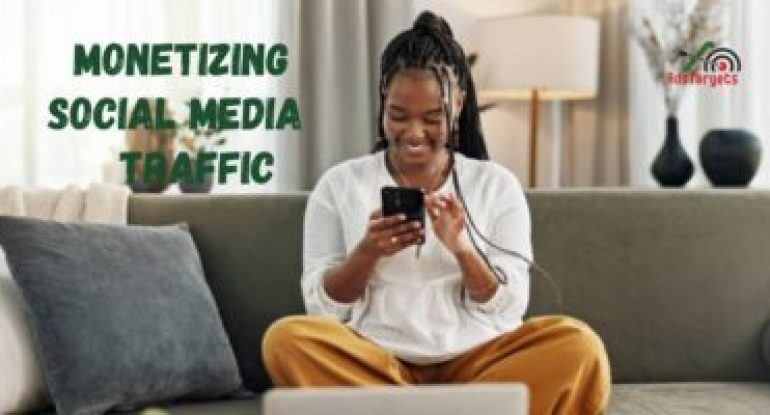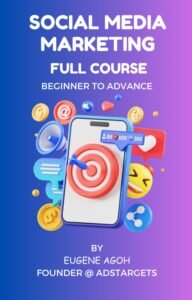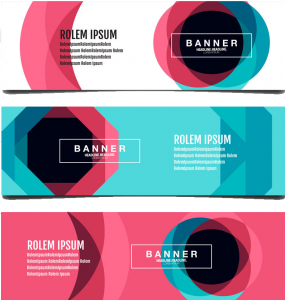Did you know you can monetize social media and turn those endless hours of scrolling into a steady stream of income? Yep, it’s not just for influencers with millions of followers—you don’t need to be a celebrity to start monetizing social media. In fact, if you know how to create valuable content, you’re already halfway there.
And no, we’re not talking about getting paid for random selfies, pet pictures, or vacation flexes. (Though, hey—if that works for you, go for it!) This is about using social media traffic the right way—whether you’re dropping knowledge on bonsai tree care, serving up relatable humor for exhausted parents, or even teaching others how to monetize social media (see what we did there?).
So, what’s the secret sauce? Strategy. Engagement. Value. The best part? You don’t need millions of followers—just the right approach and consistency.
In this guide, we’re breaking down the easiest, most effective ways to monetize social media, whether you’re just starting out or looking to level up.
Time to stop scrolling and start earning. Let’s go
Table of Contents
ToggleWhat Is Social Media Monetization?

Social media monetization is the process of generating income from your social media audience through strategic content and engagement. It involves leveraging your followers, views, and interactions to create revenue streams, whether through direct sales, partnerships, or exclusive content offerings.
This can be achieved in various ways, such as:
#1. Affiliate marketing – Promoting products and earning a commission for each sale.
#2. Selling digital or physical products – Offering e-books, courses, merchandise, or services.
#3. Paid memberships and exclusive content – Charging followers for premium access to specialized content.
#4. Sponsored content and brand partnerships – Collaborating with brands to promote their products or services.
The effectiveness of monetizing social media depends on the platform’s features and your connection with your audience. The more value-driven and engaging your content, the higher the chances of turning social media traffic into revenue.
Why Should You Monetize Social Media?
The real question is—why not?
You’re already spending time online, posting, engaging, and building an audience. So, why not turn that social media traffic into income? With a little strategy, effort, and consistency, you can start monetizing social media and transform your platform into a legit revenue stream.
Think about it, social Media is a goldmine for opportunity because millions of people scroll through social media every single day. They’re looking for entertainment, advice, inspiration, and products that make their lives easier. If you can grab their attention, provide value, and position yourself the right way, you can monetize social media and make it work for you.
Why?
✔️ Your audience is already there – Social media gives you direct access to potential customers, fans, and brand partners. You don’t need to build an audience from scratch—you just need to engage them the right way.
✔️ It’s a natural way to sell – Unlike traditional advertising, where people feel “sold to,” monetizing social media allows you to introduce products, services, or content in an organic, engaging way. Whether it’s through storytelling, tutorials, or recommendations, social selling feels more authentic.
✔️ You control your brand and income – Whether you’re growing a business, selling digital products, or landing brand deals, monetizing social media gives you full creative and financial control. No middleman, no rigid schedules—just you, your content, and your strategy.
Is It a Get-Rich-Quick Scheme? Nope—But It Works.
Monetizing social media isn’t a magic money button. It takes consistency, smart content strategies, and audience engagement. But when done right, it’s a powerful way to build passive income, grow your brand, and create long-term financial opportunities.
So, if you’re already active on social media, why not take it to the next level? Start leveraging your audience, tapping into social media traffic, and turning your platform into an income-generating machine.
Who’s Your Target Audience? (And Why It’s the Key to Monetizing Social Media)

If you’re trying to monetize social media, the worst thing you can do is create content for “everyone.” That’s like throwing a message in a bottle and hoping the right person finds it—waste of time and energy. To actually turn social media traffic into income, you need to know exactly who you’re talking to and what they need.
#Step 1: Pick a Niche & Stick to It
Before you start, ask yourself:
✔️ What’s my platform going to be about?
✔️ What kind of content do I enjoy creating?
✔️ What problems can I solve for my audience?
Your niche is your lane, and staying in it makes it easier to attract the right audience—the people who actually care about what you offer. Whether it’s fitness, personal finance, marketing, fashion, or mindset coaching, having a clear focus helps you stand out in the sea of generic content.
#Step 2: Define Your Ideal Audience (And Who You’re Not Targeting)
Once you know your niche, get specific about who you want to engage with.
Ask yourself:
✔️ What are their struggles, needs, and goals?
✔️ What kind of content would help them or entertain them?
✔️ Where do they hang out online?
Just as important—who are you not creating for? Not everyone is your ideal audience, and that’s okay. If you try to speak to everyone, you’ll connect with no one. Focus on those who will engage, share, comment, subscribe—and ultimately, buy.
#Step 3: Optimize Your Social Media Presence
You can’t monetize social media if your profiles look like abandoned ghost towns. Make sure your social media traffic lands on pages that are polished, engaging, and conversion-friendly.
Here’s how to clean up and optimize your presence:
#1. Profile & Cover Photos: Make sure they’re clear and reflect what you do. A tagline or short phrase helps explain your brand at a glance. No random, irrelevant images!
#2. Consistent Posting Schedule: Are you posting regularly? If not, start. If your content is all over the place, tighten it up. Develop a solid base of valuable content before aggressively trying to grow your audience.
#3. Analyze What Works: Look at your best-performing posts. Why did they do well? Was it the topic, timing, or engagement style? Keep what works and ditch what flops.
Follow the 60/30/10 Rule:
✅ 60% – Interest-based, engaging, educational, or entertaining content to encourage interaction.
✅ 30% – Shares from relevant industry pages, audience-generated content, and non-competing businesses.
✅ 10% – Sales-focused posts (because nobody likes a page that feels like a 24/7 commercial).
LinkedIn Users: If you’re planning to monetize social media on LinkedIn, optimize your profile and build your brand using Dripify sales automation for message campaigns, auto-invites, and endorsements.
Too many people think more followers = more money. Not true. You don’t need millions of followers—you need the right ones. A small, engaged audience is way more profitable than a large, uninterested one.
So, focus on building a community that actually cares about your content. Engage with them. Solve their problems. Provide value. Do that, and monetizing social media becomes 10x easier—because your audience won’t just follow you, they’ll trust you. And trust is what turns followers into paying customers.
How to Monetize Social Media?
#1. SELL ONLINE COURSES
If you’re sitting on a wealth of knowledge, why not monetize social media by turning that expertise into online courses? People are constantly searching for solutions, skills, and step-by-step guidance, and if you position yourself as the go-to expert, you can turn social media traffic into a steady stream of income.
Step 1: Tap Into What Your Audience Wants
The easiest way to create a high-value online course? Listen to your audience.
Ask yourself:
✔️ What questions do people keep asking you?
✔️ What struggles does your audience face?
✔️ What skills, hacks, or expertise can you teach that will genuinely help them?
Your audience’s pain points = your money-making opportunity. If they’re constantly asking for tips, tutorials, or deeper insights, they’re already telling you what they’d pay to learn.
Step 2: Package Your Knowledge into a Course
You don’t need to be a tech genius or spend months building something complicated. Courses come in all shapes and sizes—find what works best for you:
#1. Video Lessons – Break down topics into easy-to-digest videos.
#2. E-books & Guides – If writing is your strength, package your expertise into a well-structured e-book or PDF series.
#3. Live Webinars & Q&A Sessions – Engage with your audience in real-time and charge for access.
#4. Consulting & Personalized Coaching – Some people want 1-on-1 help—offer premium coaching for deeper value.
Pro Tip: Use platforms like Xperiencify to deliver your course in a way that’s engaging, interactive, and keeps your students coming back for more. Gamification = more motivation = better retention and more success stories.
Step 3: Sell & Promote Your Course Through Social Media Traffic
Once your course is ready, it’s time to monetize social media by promoting it the right way.
Tease your audience with free value – Share sneak peeks, quick tips, or snippets from your course to show why it’s worth their time.
Use testimonials & social proof – If you’ve helped people before, showcase their wins to build credibility.
Offer early-bird discounts – Create a sense of urgency and exclusivity to boost sign-ups.
Engage in conversations – Don’t just drop a link and disappear—answer questions, respond to comments, and show up for your audience.
If you’re serious about monetizing social media, creating and selling online courses is one of the smartest ways to turn your expertise into income. It’s scalable, valuable, and can bring in revenue long after the work is done.
So, if you’ve got knowledge that could help others level up, now’s the time to package it, launch it, and start building a profitable online course business.
#2. AFFILIATE MARKETING

Want to monetize social media without creating your own products? Affiliate marketing is the way to go. It’s one of the easiest and most beginner-friendly ways to turn social media traffic into income by promoting products you believe in—and getting paid every time someone makes a purchase through your affiliate link.
How Does Affiliate Marketing Work?
Simple:
✔️ You partner with brands that align with your niche.
✔️ They give you a unique affiliate link or discount code.
✔️ You share the product with your audience and recommend it.
✔️ Every time someone buys through your link, you earn a commission.
It’s like getting paid for word-of-mouth marketing, and the best part? You don’t have to deal with inventory, shipping, or customer service—just drive traffic and earn commissions.
Picking the Right Affiliate Products
Not all affiliate programs are created equal. The key to monetizing social media successfully with affiliate marketing is choosing products that actually match your audience’s interests.
Ask yourself:
🔹 Does this product align with my content? (If you’re in fitness, don’t promote gaming headsets.)
🔹 Would I personally use or recommend this? (Authenticity matters!)
🔹 Does the commission structure make sense? (Some programs offer one-time commissions, while others—like SaaS products—pay recurring commissions.)
One great place to start? Amazon’s Affiliate Program—as an Amazon Associate, you can earn from millions of products with a trusted global brand.
How NOT to Do Affiliate Marketing
#1. Spamming your links everywhere – Dropping affiliate links in every post without context? Big mistake. No one likes feeling like they’re being sold to. Build trust first.
#2. Promoting random products just for the commission – If your audience doesn’t care about it, they won’t buy it. And worse? They’ll stop trusting your recommendations.
#3. Forgetting to disclose that it’s an affiliate link – Be transparent. Honesty builds credibility, and followers appreciate knowing when you’re earning from a recommendation.
How to Do It the Right Way
✅ Create valuable content first – Tutorials, reviews, comparison posts, and how-to guides work best.
✅ Use your content to drive traffic to a landing page – Instead of dumping links everywhere (#notcool), send followers to a LinkTree, website, or blog post where they can learn more and click through naturally.
✅ Put your own spin on it – Don’t just regurgitate brand descriptions. Share your personal experience, tips, and insights on why the product is worth it.
Affiliate marketing is a low-risk, high-reward way to monetize social media—all you need is an engaged audience, valuable content, and the right affiliate programs. When done authentically, it’s one of the best ways to turn social media traffic into commissions while building trust with your audience.
So, stop leaving money on the table—start leveraging affiliate marketing and get paid for the recommendations you’re already making.
#3. PAID INFLUENCER MARKETING

Does calling yourself an influencer feel a little arrogant? It shouldn’t. If you’re creating content, building an engaged audience, and driving social media traffic, then guess what? You’re already influencing people. And if brands are willing to pay for that influence, why not cash in?
What Is Paid Influencer Marketing?
Monetizing social media through paid influencer marketing is about getting compensated for promoting brands, products, or services on your platform. It’s real work—creating content, engaging your audience, and making sure brands get visibility through your reach.
And no, you don’t need millions of followers to monetize social media this way. Brands care more about engagement than just numbers. A highly engaged, niche audience is often more valuable than a large but passive following.
How Do You Get Paid?
Depending on the partnership, brands can compensate you in different ways:
#1. Flat Fee Per Post – You get paid a set amount for promoting a brand’s product or service.
#2. Free Products & Perks – Some brands offer free items in exchange for a feature (great for beginners).
#3. Affiliate Commissions – You earn a percentage of sales generated through your unique link or code.
#4. Platform-Based Payouts – Programs like YouTube’s Creator Fund reward you based on views and engagement.
How to Land Influencer Deals
You don’t have to wait for brands to find you—you can actively reach out for relevant partnerships that align with your niche.
#1. Engage your audience – Brands love influencers who actually interact with their followers, not just post and disappear.
#2. Optimize your social media presence – A clean, professional, and well-branded profile makes you look more appealing to brands.
#3. Pitch yourself – Don’t be afraid to DM brands or email their marketing teams with a collaboration proposal.
#4. Join influencer platforms – Sites like AspireIQ, Upfluence, and BrandSnob connect influencers with brands looking for partnerships.
Paid Influencer Marketing Works for Every Niche
Think this only applies to beauty, fashion, or tech influencers? Nope. Every industry has brands looking for exposure. Whether you’re into fitness, personal finance, gaming, mental wellness, or DIY crafts, there’s an opportunity to monetize social media traffic through brand deals.
If you’re consistently posting, engaging, and influencing purchasing decisions, you’re already providing value to brands—so why not monetize social media and get paid for it? It’s not arrogance, it’s business.
Leverage your audience, build brand relationships, and start turning your social media traffic into income.
#4. PAID MEMBERSHIPS
If your audience can’t get enough of your content, why not give them premium access—and get paid for it? Monetizing social media through paid memberships is one of the smartest ways to turn social media traffic into consistent income, especially if you’re already delivering value-packed content for free.
How Does Paid Membership Work?
Instead of just posting everything for free, you create exclusive, members-only content that your audience pays to access. Think of it like a VIP club where your most loyal followers get:
#1. Bonus content – Extra tutorials, behind-the-scenes access, or exclusive insights.
#2. Deeper engagement – Private Q&As, live sessions, or personalized coaching.
#3. Early access – Get first dibs on new content, product drops, or insider updates.
If you’ve built an audience that trusts your expertise and wants more, paid memberships can be a goldmine for monetizing social media.
Where Can You Host Paid Memberships?
There are tons of platforms designed to help you build subscription-based content:
✅ Patreon – Perfect for creators who want to offer different membership tiers with exclusive perks.
✅ Xperiencify – Great for turning content into gamified learning experiences.
✅ YouTube Memberships – If you’re a video creator, allow followers to pay for premium content.
✅ Buy Me a Coffee – A simple way to let your audience support you with small, recurring payments.
Making Paid Memberships Work for You
Not sure if your audience will pay? Here’s the key: You need to prove your value first. If people are already engaged with your free content, asking for more, and seeking deeper insights, they’ll be willing to pay for premium access.
#1. Test the waters – Offer a free preview or limited-time access to hook your audience.
#2. Find the right balance – Don’t just paywall everything—give free value while making premium content irresistible.
#3. Experiment & adapt – Try different formats (videos, live sessions, courses) and see what resonates most.
More Than Just Money—It’s About Sustainability
Creating high-quality content takes time and effort. If you’re constantly giving away value for free, it can burn you out. Paid memberships help balance your workload and income, allowing you to focus on creating your best content while getting fairly compensated for it.
If you’re serious about monetizing social media, paid memberships are a game-changer. They help you:
#1. Generate consistent income from your social media traffic.
#2. Build an engaged community that’s invested in your content.
#3. Create content with purpose, knowing it’s valued and appreciated.
So, if your audience is loving what you do, why not take it up a notch? Monetize social media the smart way—offer premium content and get paid for your expertise.
#5. SPONSORED POSTS AND VIDEOS
If you’ve been putting in the work, growing your audience, and keeping social media traffic engaged, it’s time to cash in with sponsored posts and videos. Brands are always looking for creators to promote their products, and if you’ve built trust with your audience, you can turn those partnerships into a steady revenue stream.
What Are Sponsored Posts & Videos?
Simply put, a brand pays you to create content featuring their product or service. It could be:
#1. A sponsored Instagram post showcasing their product.
#2. A TikTok or YouTube video highlighting how you use it.
#3. An Instagram Story or Reel series where you engage with the product in real-time.
The beauty of this? You get paid for content you’re already creating.
The Catch? Know the Rules Before You Say Yes
Before jumping in, read the fine print. Brands will typically have specific requirements, like:
➡️ Messaging guidelines – They might want you to say certain things about the product.
➡️ Post structure – Some brands give creative freedom, while others expect a strict format.
➡️ Approval process – Some companies require pre-approval before you publish.
Pro Tip: Always align with brands that fit your niche. Your audience follows you for a reason—don’t ruin that trust by promoting things that feel random or forced. Authenticity sells.
Level Up: Sponsored Video Series = More $$$
Once you get comfortable with sponsored posts, take it up a notch with sponsored video series.
#1. Instagram Stories & Reels – Many brands pay per impression, so the more views, the bigger your check.
#2. YouTube Series – A multi-part video series can lock in long-term partnerships with brands.
#3. Behind-the-Scenes & Demos – Show your audience how the product works in real life—engagement goes up, and so does your sponsored rate.
How to Land Sponsored Deals
You don’t have to wait for brands to find you—go get those deals yourself:
✅ DM or email brands you love – Let them know why you’re a great fit.
✅ List yourself on influencer platforms – Websites like AspireIQ, BrandConnect, and Upfluence help match creators with brands.
✅ Engage with brands before pitching – Comment on their posts, share their content, and get on their radar.
Final Thoughts: Sponsored Content = Smart Social Media Monetization
If you’re already creating content that resonates with your audience, why not monetize social media while staying authentic? Sponsored posts and videos let you:
#1. Get paid for content you love creating.
#2. Introduce your audience to brands you genuinely trust.
#3. Leverage social media traffic to build a profitable creator business.
Done right, sponsored content isn’t just about making money—it’s about building long-term brand relationships that benefit both you and your audience. So, step up, secure those deals, and start getting paid for your influence.
#6. BRAND PARTNERSHIPS

If you’re serious about monetizing social media, one-off sponsored posts are cool—but long-term brand partnerships? That’s where the real money is. Instead of a one-and-done deal, partnering with brands creates consistent income while keeping your content fresh and valuable for your audience.
Why Brand Partnerships Beat One-Off Sponsorships
The difference between sponsored content and brand partnerships is simple:
✔️ Sponsored post – A one-time deal where you promote a product in a single post.
✔️ Brand partnership – An ongoing collaboration where you consistently integrate a brand into your content over time.
Long-term partnerships mean:
#1. More stability – No need to constantly chase new sponsors.
#2. More trust – Your audience sees you genuinely using the product, not just cashing in on a random deal.
#3. More value – Repeated exposure means better engagement and conversion rates for the brand.
The Trick? Keep It Authentic. Not every brand is the right fit.
If you start plugging random products that don’t align with your content, your audience will notice—and not in a good way. A bad brand fit = lost trust + lost followers = lost income.
Before signing a deal, ask yourself:
✅ Does this brand align with my values?
✅ Will my audience actually benefit from this?
✅ Do I believe in the product/service?
If there’s a value clash, walk away. Forced partnerships feel awkward and can backfire big time.
Finding the Right Brand Partnerships
#1. Check what brands your audience already loves – If they’re into fitness, gaming, personal finance, or beauty, look for brands in that space.
#2. Explore platforms like the YouTube Partner Program – It connects creators with brands looking for long-term collaborations.
#3. Reach out directly – Don’t be afraid to pitch yourself to brands that align with your niche. DMs and emails work if you make a strong case.
How to Make Brand Partnerships Work
🔹 Agree on the content format – Will it be sponsored posts, product placements, or co-branded projects?
🔹 Negotiate compensation – Flat fee? Commission-based? A mix of both? Make sure it’s worth your time.
🔹 Keep it engaging – Don’t just slap a logo in your post. Integrate the brand naturally into your storytelling.
If you want to turn social media traffic into long-term revenue, brand partnerships are the way to go. Done right, they create a win-win situation—your audience gets valuable recommendations, the brand gets exposure, and you get paid without constantly chasing new deals.
So, choose wisely, keep it real, and start building profitable brand collaborations that go beyond a single post.
#7. MONETIZING SOCIAL MEDIA WITH BUILT-IN SHOPS
Got physical products to sell? Then why send people away from social media when you can let them shop right where they scroll? Setting up a social media shop is one of the easiest and most effective ways to monetize social media and turn social media traffic into direct sales—without making customers jump through hoops.
How to Set Up a Social Media Shop
It’s easier than you think to turn your Instagram or Facebook page into a full-on storefront.
Step 1: Convert to a Business Account – If you’re still using a personal account, it’s time to switch. Business accounts unlock shopping features, insights, and more tools to help you sell.
Step 2: Connect Instagram to Facebook – Facebook and Instagram work together, so linking them gives you better reach and seamless integration for your shop.
Step 3: Set Up Your Product Catalog – You can manually add products or connect to an eCommerce platform (like Shopify or BigCommerce) for automatic syncing.
Step 4: Get Approved & Activate Shopping – Once Facebook reviews and approves your store, you can start tagging products in your posts, Reels, and Stories.
Now, instead of sending people to an external website, they can browse, shop, and buy—all within the platform.
Why This Works for Monetizing Social Media
#1. Less friction, more sales – Customers don’t have to leave social media to make a purchase. The easier it is to buy, the more they’ll spend.
#2. Boosts discoverability – Your products show up in Instagram’s Shop tab, making it easier for new customers to find you.
#3. Built-in analytics – Track sales, views, and engagement without third-party tools—so you can double down on what works.
Pro Tip: Don’t Just Set Up Shop & Expect Sales. A shop without an engaged audience won’t sell.
Having a social media shop is great, but it’s only as powerful as the community behind it. Before expecting sales, focus on:
#1. Building an engaged audience – Post valuable content related to your niche, not just product ads.
#2. Using shopping tags creatively – Tag products in lifestyle photos, tutorials, and behind-the-scenes posts to make them feel natural.
#3. Running promotions & exclusives – Give your followers VIP discounts or early access to new products.
If you’re selling physical products, you’re leaving money on the table if you’re not using built-in social media shops. This is one of the simplest ways to monetize social media, turning social media traffic into customers with zero extra effort on their part.
So, don’t just build an audience—turn that audience into buyers. Set up your social media shop, optimize what sells best, and let your content do the selling for you.
#8. DRIVE SOCIAL MEDIA TRAFFIC TO YOUR WEBSITE & BOOST SALES
If you prefer selling directly from your website, then social media traffic is your golden ticket. Monetizing social media isn’t just about in-app shops—it’s also about using your social platforms as a traffic machine to drive potential customers straight to your website, where they can learn more and buy with confidence.
Why Send Traffic to Your Website Instead of Selling on Social Media?
Not every product fits neatly into a Facebook or Instagram Shop. If you’re selling high-ticket items, complex services, or products that require a detailed breakdown, you need space—landing pages, FAQs, testimonials, and all the good stuff that turns hesitant visitors into paying customers.
A simple social media ad won’t close the deal on a $2,000 coaching program or premium service. You need a website that does the heavy lifting, and social media is how you get people there.
How to Drive Social Media Traffic to Your Website (The Right Way)
#1. Create teaser content – Drop valuable insights, product previews, or short-form content that makes followers curious enough to click your link.
#2. Use a clear call-to-action (CTA) – Don’t assume people will find your site on their own—tell them exactly where to go and why they should go there. Example: “Want to learn more? Click the link in my bio!”
#3. Leverage Instagram Stories, Reels & Facebook posts – Use captions, swipe-up links (if eligible), and shopping tags that lead back to your website.
#4. Run targeted ads – Organic reach is great, but Facebook & Instagram ads can supercharge your efforts by getting your offer in front of the right people.
#5. Track results with Google Analytics – See which posts drive the most traffic so you can refine your content strategy for better conversions.
One big mistake? Posting a link and expecting magic to happen. Nope. Engage with your audience. Answer questions. Build anticipation. Use social proof (testimonials, reviews, case studies) to make clicking your link a no-brainer.
Monetizing social media isn’t just about making sales inside the platform—it’s also about leveraging social media traffic to fuel your website. Whether you’re selling high-ticket services, online courses, or premium products, the key is driving engaged users to your website, where they can take the next step.
So, don’t just build an audience—guide them toward your offer, track your results, and turn those clicks into cash.
#9. GENERATE SALES INDIRECTLY
Think monetizing social media is only about racking up followers and selling directly on Instagram or Facebook? Think again. You don’t have to sell inside the platform—you can use social media traffic to drive people to your website, landing page, or booking calendar and close sales where it matters most.
This isn’t about hard selling every post—it’s about staying visible, providing value, and keeping your audience engaged, so when they need your product or service, you’re the first name that comes to mind.
How Does This Work?
Instead of aggressively pushing for sales, you:
#1. Post consistently – Share tips, insights, and relevant content that keeps your audience engaged.
#2. Spark conversations – Get people talking about industry trends, common struggles, or solutions you offer.
#3. Stay top-of-mind – So when they actually need what you sell, they remember you first.
#4. Guide them to your website or booking page – Drop a subtle but strong CTA (Call to Action) directing them to your bio link, landing page, or DMs.
Why This Works for Monetizing Social Media
#1. Warms up your audience – People don’t always buy immediately, but consistent engagement keeps them interested until they’re ready.
#2. Positions you as the expert – If you’re consistently educating, helping, and adding value, you build trust, making conversions easier.
#3. Funnels social media traffic to your main sales channel – Whether it’s your website, booking link, or email list, social media becomes the bridge to real revenue.
How to Do It Right
#1. Post regularly – Daily or weekly updates that provide value and keep you relevant.
#2. Engage in conversations – Ask questions, reply to comments, and interact with your audience.
#3. Track your results – Use Google Analytics or social media insights to see which platforms drive the most website traffic and conversions.
#4. Make it easy to reach you – Your bio should always have a clear link to your website, landing page, or calendar.
This strategy is powerful because it builds relationships first. You’re not just chasing quick sales—you’re creating demand over time, so when your audience needs what you offer, they already trust you enough to buy.
So, don’t just monetize social media by selling directly—use it to drive high-quality traffic to the places where real business happens. Stay consistent, stay visible, and let the sales roll in.
#10. CREATE & SELL YOUR OWN PRODUCT
If you’re already monetizing social media through brand deals, affiliate marketing, or memberships, why not take full control of your income by creating your own product? Instead of just promoting other people’s stuff, you can build something that’s 100% yours, keep more of the profits, and grow your brand on your own terms.
Why Selling Your Own Product Matters
When you rely on sponsorships, partnerships, or affiliate programs, your income depends on other people’s decisions. But when you own the product, you call the shots. You set the price, control the marketing, and keep the majority of the profits. Plus, it helps:
#1. Expand your income streams – No more depending on ad revenue or brand deals.
#2. Strengthen your brand influence – Your audience sees you as an expert, not just a promoter.
#3. Make your social media traffic work for YOU – Instead of sending your audience to someone else’s product, you drive them to yours.
How to Create a Product That Sells
#1. Pick something your audience actually wants – Look at FAQs, DMs, and comments. What are people always asking you for?
#2. Start small if needed – You don’t have to create a massive course or product line from day one. Start with something simple but valuable.
#3. Differentiate from competitors – What can you offer that nobody else in your niche is doing? Find the gap and fill it.
#4. Decide on digital or physical – A digital product (ebooks, templates, courses) is low-cost and easy to scale. A physical product (merch, planners, skincare, gadgets) takes more investment but can create huge brand loyalty.
How to Sell & Promote Your Product
#1. Leverage your social media traffic – Your followers already trust you, so use your platform to organically promote your product.
#2. Create buzz before launching – Tease it in your content, build anticipation, and get your audience hyped up.
#3. Use a mix of content styles – Show behind-the-scenes, user testimonials, tutorials, and storytelling to make the product relatable and desirable.
#4. Make purchasing seamless – Whether it’s an Instagram shop, a Shopify store, or a landing page, make sure buying is quick and hassle-free.
Monetizing social media traffic by selling your own product is one of the most sustainable and profitable moves you can make. It gives you full control, helps build your authority, and creates an income stream that’s not dependent on outside brands.
If you’ve built an audience, now’s the time to turn that engagement into ownership—because selling your own product isn’t just about making money, it’s about owning your space in your industry.
#11. HOST EVENTS
Want to monetize social media while deepening your connection with your audience? Host events—whether online, in-person, or both. Events are powerful for engagement and sales because they create real-time interaction, build trust, and position you as an authority in your niche. Plus, they’re a great way to turn social media traffic into paying customers.
Why Hosting Events Works for Monetizing Social Media
#1. Real-time connection = stronger trust – When people see and interact with you live, they connect with you on a deeper level. That’s what makes them more likely to buy from you later.
#2. Create multiple income streams – Charge for event access, upsell other offers, or use the event to promote your products, services, or memberships.
#3. Repurpose event content – Stream in-person events to your online audience or record and sell the replay. Double the reach, double the value.
Types of Events You Can Host
#1. Live Q&A Sessions – Answer burning questions and engage directly with your audience.
#2. Workshops & Masterclasses – Teach a specific skill and charge for access.
#3. Exclusive VIP Sessions – Offer paid behind-the-scenes access, deep-dive strategy calls, or networking sessions.
#4. Hybrid Events – Run an in-person event while live-streaming for your online audience.
How to Make Your Events Profitable
#5. Charge a small fee for access – Even a low-cost ticket price filters out freebie-seekers and brings in people who are ready to invest.
#6. Upsell your other offers – Use the event to introduce your courses, coaching, services, or products to an engaged audience.
#7. Make it about THEM, not just you – Ask questions, involve attendees, and create an interactive experience that keeps them engaged and wanting more.
Hosting events is one of the most effective ways to monetize social media while building stronger relationships with your audience. Whether it’s a paid workshop, a live-streamed conference, or an exclusive Q&A, events turn social media traffic into real-world revenue.
So, if you’ve got knowledge, insights, or experiences to share—why not turn that into an event people will pay to attend?
#12. USE CHATBOTS TO MONETIZE SOCIAL MEDIA AND BOOST CONVERSIONS
People are getting more private with their online interactions. Not everyone wants to drop a comment under your post for the whole world to see. Instead, they slide into your DMs, inboxes, and message requests, looking for personalized engagement.
That’s where chatbots come in. They let you automate conversations, filter leads, and turn social media traffic into paying customers—without being glued to your phone 24/7.
Why Chatbots Are a Game-Changer for Monetizing Social Media
#1. Instant engagement = better conversions – A potential customer has a question? Instead of making them wait, a chatbot can respond immediately, keeping them interested.
#2. Filters serious buyers from casual browsers – Not everyone who hits your inbox is ready to buy. A chatbot can ask qualifying questions to figure out who’s serious.
#3. Saves you time – Instead of answering the same questions over and over, chatbots handle the repetitive stuff so you can focus on closing sales and creating content.
#4. Creates multiple sales touchpoints – Use chatbots to offer coupons, collect emails, or guide users to your product pages—all on autopilot.
How to Use Chatbots to Monetize Social Media Traffic
#1. Automate the first interaction – Set up a chatbot to greet potential customers, answer FAQs, and direct them to the next step (your store, landing page, or booking link).
#2. Offer incentives – Get people excited to engage by offering exclusive discounts, free guides, or VIP access when they complete a chatbot quiz or sign up for your email list.
#3. Personalize the experience – Advanced chatbots can customize responses based on user behavior, making interactions feel more human and less robotic.
#4. Use them across platforms – Facebook Messenger, Instagram DMs, WhatsApp, or even your website—integrate chatbots wherever your audience is most active.
Pro Tip: Automate, But Keep It Human. Chatbots should enhance, not replace, real conversations. If someone needs personal attention, make sure your system allows them to easily connect with a real person when needed.
If you’re serious about monetizing social media, chatbots are one of the smartest tools you can use. They automate lead generation, filter out time-wasters, and guide potential buyers to the checkout page—all while you focus on growing your brand.
So why spend hours manually answering DMs when a chatbot can handle the first steps for you? Set it up, optimize it, and let your chatbot do the work while you cash in on social media traffic.
#13. WRITE SALES POSTS THAT ACTUALLY CONVERT
So, you’ve been putting in the work—growing your social media following, engaging with your audience, and building trust. You know their pain points, what keeps them up at night, and how your product or service can solve their problems. Now, it’s time to turn that social media traffic into real sales—but here’s the catch: just posting a “BUY NOW” link isn’t gonna cut it.
Why Thoughtful Sales Posts Matter for Monetizing Social Media
#1. People don’t buy products; they buy solutions. Show them how your offer makes their life better, easier, or more enjoyable.
#2. Good sales posts don’t feel “salesy.” If your post sounds like a pushy ad, people will scroll past it. If it feels like a conversation, they’ll engage.
#3. Clear CTAs = More Conversions. If your audience has to guess how to buy, they won’t bother. Make it stupidly easy.
How to Write a Sales Post That Actually Sells
#1. Focus on the customer, not just the product. Instead of “Check out my new course,” try “Struggling with XYZ? This course will help you fix that in 7 days.”
#2. Tap into emotions. How will they feel after using your product? Relieved? Confident? Excited? Use that in your messaging.
#3. Make buying easy. Drop a direct link, use shopping tags, or guide them to your bio—zero friction, zero confusion.
#4. Use visuals that sell. Do your images or videos make it crystal clear what your offer is and why they need it? If not, go back to the drawing board.
Monetizing social media isn’t about spamming your audience with promos—it’s about knowing when and how to sell in a way that feels natural, valuable, and irresistible. Nail that, and you won’t just make sales—you’ll build a loyal community that keeps coming back for more.
#14. ANSWER FAQS
Let’s be real—potential customers always have questions before they buy. Whether it’s about pricing, product features, refunds, or how your offer works, they need clarity before they hit that purchase button. Instead of burying your FAQs on a random website page, why not turn them into engaging social media content?
Why Answering FAQs Helps You Monetize Social Media
#1. Eliminates hesitation = More conversions – When people don’t have to hunt for answers, they’re way more likely to buy.
#2. Boosts engagement – A live FAQ session, interactive Q&A, or behind-the-scenes explainer keeps followers engaged.
#3.Builds trust & authority – The more transparent and informative you are, the more confidence your audience has in you.
How to Turn FAQs Into Social Media Traffic & Sales
#1. Break it into bite-sized content – Instead of dumping a long list, tackle one FAQ per post, story, or live session to keep it engaging.
#2. Go live & answer in real time – Hop on Instagram, TikTok, or Facebook Live to answer top questions and interact with your audience directly.
#3. Make it a series – A weekly “Ask Me Anything” (AMA) or “FAQ Friday” keeps your audience coming back for more.
#4. Use creative formats – Try Q&A stickers, carousels, Reels, or video clips to make your answers fun, visual, and easy to consume.
Answering FAQs isn’t just about helping your audience—it’s a strategic way to monetize social media. It eliminates doubts, increases social media traffic, and builds trust, all while keeping you top-of-mind when your audience is ready to buy.
So, stop letting unanswered questions cost you sales—get out there, engage, educate, and turn those FAQs into profits.
#15. LEVERAGE TESTIMONIALS
If you want to monetize social media successfully, you need more than just a great product or service—you need trust. And nothing builds trust faster than real testimonials from real people who’ve already experienced the value you offer.
Why Testimonials Are Essential for Monetizing Social Media
#1. Social proof = more sales – People trust other customers more than ads. A solid testimonial can convince hesitant buyers to take action.
#2. Boosts engagement & social media traffic – Sharing success stories makes your audience more likely to interact, comment, and share.
#3. Builds credibility & authority – When people see that others have had a great experience with your offer, they’ll feel way more confident buying from you.
How to Collect & Share Testimonials Like a Pro
#1. Ask at the right time – Right after someone raves about your product or service is the best moment to request a testimonial.
#2. Make it easy – Provide a simple form, DM template, or even record a quick voice note to capture their feedback effortlessly.
#3. Offer incentives – A discount, coupon, or bonus can encourage more people to leave reviews.
#4. Use different formats – Mix it up with screenshots, video testimonials, written reviews, or before-and-after transformations.
#5. Highlight results & emotions – A great testimonial isn’t just “I loved it!”—it should show how your offer solved a problem or improved their life.
Pro Tip: Turn Testimonials into Content
#1. Create a weekly “Customer Spotlight” series featuring happy buyers.
#2. Use testimonials in captions, stories, and pinned posts for ongoing visibility.
#3. Turn them into case studies to show real transformations and wins.
Testimonials are one of the easiest, most effective ways to monetize social media because they let your happy customers do the marketing for you. The more social proof you have, the more confidence new buyers will have in your offer—and the faster you’ll turn social media traffic into real sales.
So, start collecting those testimonials, showcase them proudly, and watch your conversions skyrocket.
#16. USE POLLS TO CONNECT, ENGAGE
Want to know exactly what your audience wants before you create, launch, or sell anything? Stop guessing and start asking. Polls are one of the simplest but most effective ways to engage your audience, drive social media traffic, and monetize social media without wasting time or money on offers that don’t resonate.
Why Polls Are a Game-Changer for Monetizing Social Media
#1. Gets rid of the guesswork – Instead of assuming, you get real feedback straight from the people who matter most—your audience.
#2. Increases engagement – Polls spark conversations, encourage participation, and keep your followers actively involved in your content.
#3. Makes your audience feel valued – People love having a say in what’s being created for them. When they feel heard, they’re more likely to support your offers when they launch.
How to Use Polls to Boost Sales & Social Media Traffic
#1. Ask about product features, colors, styles, or content ideas – Before launching, let your audience help shape the final product.
#2. Keep it simple & clear – Short, direct questions get more responses.
#3. Use polls as pre-launch hype – Get people excited and emotionally invested in what you’re working on before it even drops.
#4. Turn poll results into content – Share responses, discuss insights, and let your audience see how their input is shaping your next move.
Pro Tip: Make It Interactive & Fun
#1. Instagram Stories polls & quizzes – Quick, easy, and great for boosting engagement.
#2. Twitter/X and LinkedIn polls – Ideal for gathering industry opinions and insights.
#3. Facebook & TikTok comment polls – Get creative with your CTA and ask followers to vote in the comments.
Polls aren’t just about gathering data—they’re about building relationships, increasing engagement, and ensuring you create what your audience actually wants. If you’re serious about monetizing social media, using polls strategically will help you fine-tune your offers, increase conversions, and turn social media traffic into loyal customers.
So, start asking, start engaging, and watch your audience turn into buyers.
Conclusion
So, are you ready to monetize social media and turn all that social media traffic into a real, sustainable income? You’ve got the ideas, the strategies, and the blueprint—now it’s time to make it happen.
Start with your niche, your audience, and the problem you’re solving. Optimize your platform, engage consistently, and build trust and loyalty with your followers. Because at the end of the day, people don’t just buy products—they buy from brands and creators they believe in.
Stay real, stay committed, and appreciate the community you’re building. They’ll be the ones who support, share, and help propel your success.
Now, stop overthinking. Pick your monetization strategy, go all in, and start making money from your social media.








